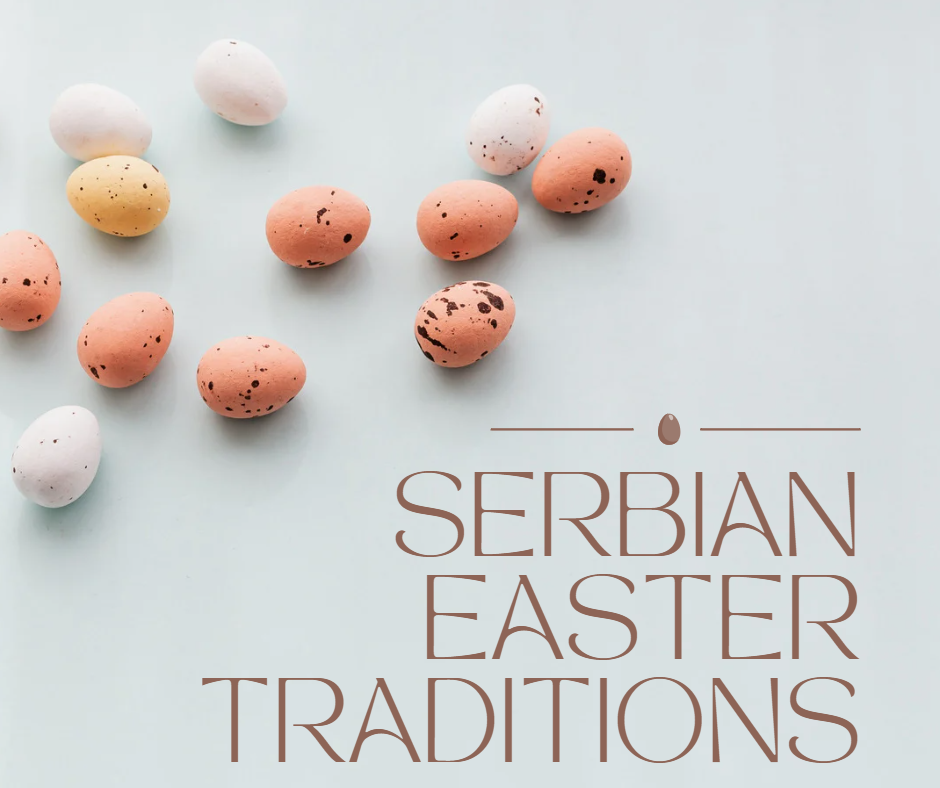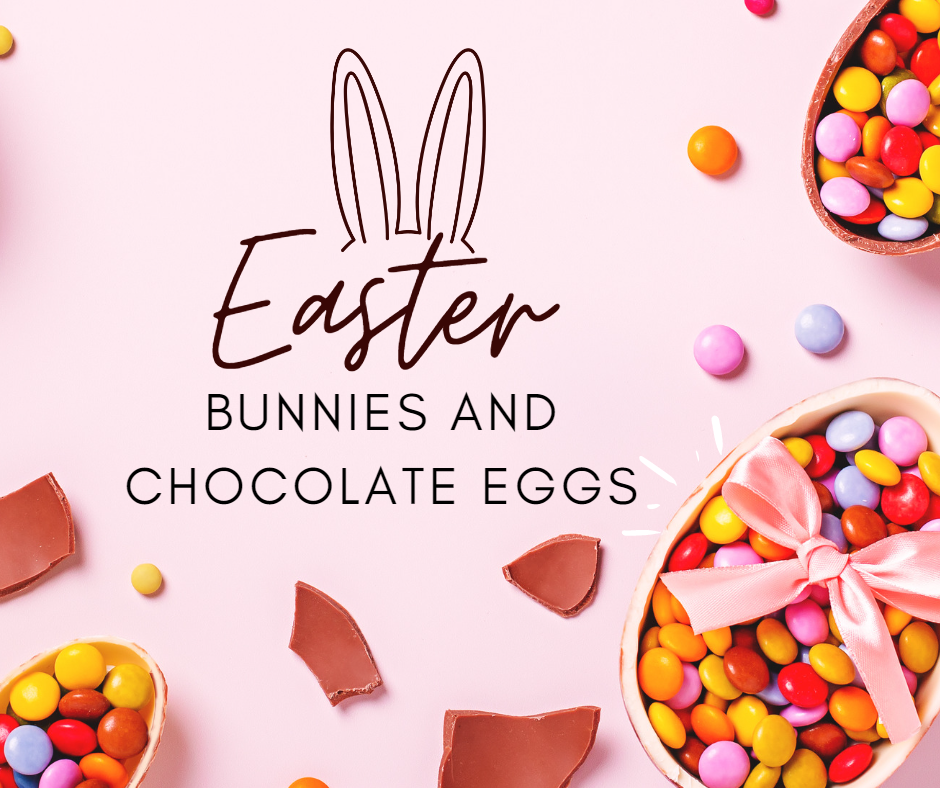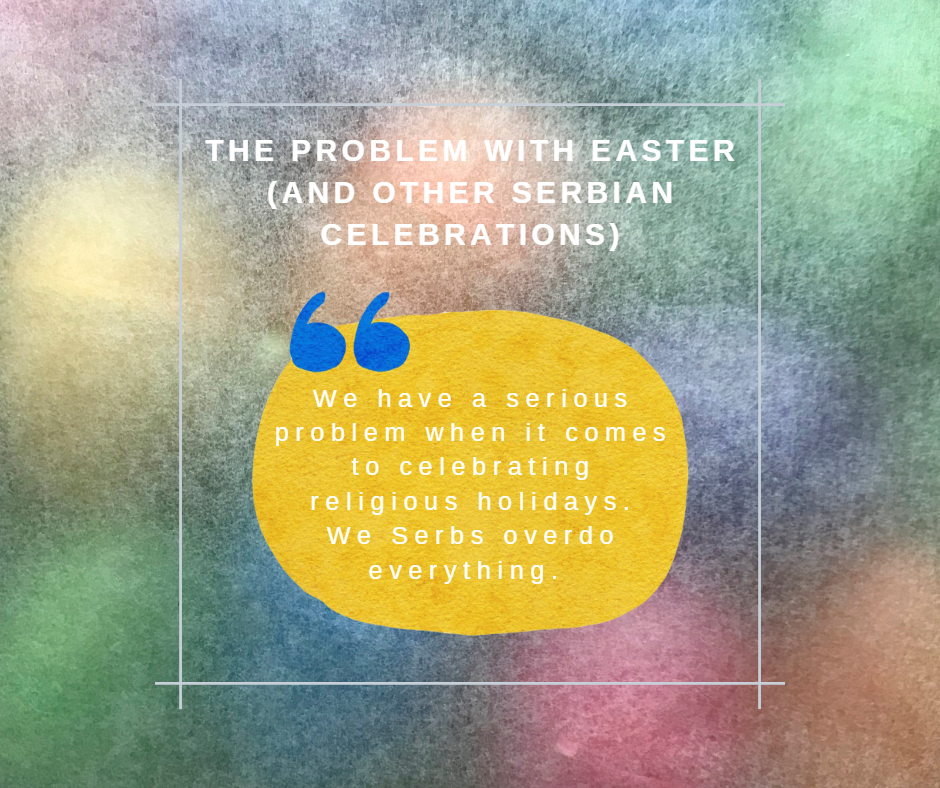Christ Has Risen! Happy Easter!

Serbian Easter falls on Sunday, April 16, one week after Western Easter. (East is lagging behind West, per usual.) All across Christendom, Easter is the most joyous religious holiday during which we remember our savior, Jesus Christ, and his sacrifice.
The Easter traditions in Serbia are unusual and exceptional at the same time. We celebrate Christ’s resurrection, color the eggs, roast lamb, prepare outstanding feasts, and gorge on food for three days (at least), all in the name of the son of God.
Let’s see what makes Easter in Serbia an unparalleled spring festivity.
Why do we celebrate Easter?
We all know the story: Christ entered Jerusalem, had the Last Supper with his twelve disciples, one decided to betray him in exchange for thirty pieces of silver, and he was crucified by the Romans. Three days later, he was resurrected from the dead on a Sunday, and since then, Christians around the world have commemorated his sacrifice and love for all mankind.
During this Holy Week, we have Palm Sunday (the day Jesus entered Jerusalem), Spy Wednesday (the betrayal of Jesus is mourned), Big Thursday (the day of the Last Supper), and Good Friday (when Jesus was crucified).
Easter is a moveable feast, which means it doesn’t fall on a fixed date each year. The date is calculated based on the lunar calendar by the full moon after the vernal equinox. For the Julian calendar, this means it has to fall on any given Sunday between April 4 and May 8. Easter is preceded by forty days of Lent, in which Christians (not all of us) fast and pray. On Easter, they break the fast with scrumptious holiday feasts.
In its main purpose, Easter in Serbia doesn’t differ much from the rest of the world. It’s the details that set us apart. And one small detail that can’t be overlooked are the eggs.

Easter bunnies and chocolate eggs
You might have seen on the internet a picture or two of Easter eggs—painted, dyed, and decorated—or heard about the tradition of egg tapping. That’s what we do in these parts of Europe as Orthodox Christians: we dye and tap eggs.
The practice of decorating eggshells is ancient—dare I say, pre-Christian—which would make this and many other Christian religious traditions, well, pagan. The first engraved, decorated egg dates back to the second millennium BC. The ostrich egg found in Africa was painted with dots, white lines, and black zig-zags. It seems that the Christians adopted this Easter custom in the early 17th century. In the Orthodox Christian tradition, we paint the eggs in different colors using different techniques, but the most important color to dye a chicken (or ostrich, if available) egg in is red.
Why do eggs even have anything to do with Easter?
Eggs symbolize fertility and rebirth. In Christianity, they represent the empty tomb of Christ, from which he was resurrected. The color red is symbolic as well: the blood of Christ was shed at the time of the crucifixion. If you believe legends, when Christ ascended to heaven, Mary Magdalene went to the Emperor of Rome and greeted him with “Christ has risen.” The emperor pointed to an egg on his table and said: “Christ has no more risen than that egg is red.” Immediately after saying that, the egg turned blood red.
That’s why, two thousand years later, we dye eggs red and other colors. (Red is great, but we prefer a splash of color on our table.) It was quite recently, some hundred years after the Christian church had officially adopted the custom of egg-painting, that chocolate eggs became all the rage. They first appeared in the 18th century in France, during the reign of Louis XIV, and in Italy, when they started making chocolate eggs by filling empty chicken eggs with molten chocolate. Today, these sweets are made entirely out of chocolate and sold even in Serbia.
I’m not trying to be a religious nitpick, but what red eggs representing blood and empty tombs I get? Chocolate eggs and Easter bunnies? This Western practice has infiltrated our ranks, and now our kids receive different types and sizes of chocolate eggs and bunnies. I can’t imagine having that conversation with a child, trying to explain the connection between Easter and bunnies. No offense, West, but we think we win this battle of semi-logical traditions.

Dyeing and decorating the eggs
There comes a moment before Easter when all you start thinking about is eggs. You need to buy enough to get your family through the holiday. You need a number of eggs to dye (symbolically, 40 eggs should be dyed, but who’s counting), a number to use in cooking and baking, and then a few here and there in case you crave an omelet in the midst of the oh-so-scrumptious Easter feast.
In Serbia, we dye the eggs on Good Friday, on which you technically can’t have an egg or any other animal product since it’s Lent. I say technically for all those good Christians who fast all 40 days of Lent. We bad Christians fast only on Good Friday, so eggs are out of the question either way.
Dyeing eggs is a wonderful family tradition. When possible, it should involve all members of your household and some of the extended family that will help you prepare the feast, dye eggs, and have a nice vegan meal with you. The egg-dyeing day is also a day to multitask: make sure your eggs don’t overcook; make sure you don’t burn your fingers on scorchingly hot but cute eggs that come out of your pot; watch out for your 4-year-old who likes sticking her fingers everywhere; make sure she doesn’t fall off the kitchen counter because you want to be a cool, modern mom and include your kid in everything while screaming at her every five seconds not to touch that because it’s sharp/hot/dirty.
The first red egg that you take out of the pot becomes the protector of your household. You keep it all year long, until next Easter when its replacement emerges from a boiling pot of colored water. You can find all sorts of decorative beds and casings for your egg protector. Kids even make those in kindergarten and school, so when they bring them home, all giddy and proud of their work, you kind of have to put the egg in whatever DIY mess they make. That’s what family is all about.
Today, we use ready-made color powders or gels to dye the eggs. Our grandmothers colored the eggs using natural methods like onion peels, beetroot, cornel, hawthorn, nettle seeds, and horseradish flowers, depending on what color you’re aiming for. The most exciting part is decorating. You take an old stocking and gather some leaves or flowers from the garden. You stick them to the egg any way you like—you can also use thread or anything else that will “stain” the egg—and wrap it all in a stocking, tying it tightly. You boil the egg in a pot of water with the coloring of your choice (use the store-bought packets of vibrant colors, no judgment here). When it’s boiled and colored, you remove the stocking, and you’ve got yourself a perfectly decorated old-school Easter egg.
And then you repeat with at least three other egg colors. Don’t try to go over the top; purple and blue are the hardest to get. Aim for earthy colors, and if your eggs don’t dye very well, add a filter before you post them online. You’re going to crack and eat them anyway.
Modern housewives (and those who identify as such) rarely bother with this old-school type of decorating method. Instead of stockings and beautiful leaves, we now slap on some Easter egg stickers. Kids love those. Unless you can find a unicorn-shaped flower or a leaf that looks exactly like Elsa to wrap around your egg and then boil it in stockings or handkerchiefs, it isn’t worth the effort. (Let it go.)
The problem with Easter (and other Serbian celebrations)

We have a serious problem when it comes to celebrating religious holidays. We Serbs overdo everything.
Back in the day, Easter, Christmas, slava, and other important Orthodox holidays were actually about faith, saints, and family. Today, the general consensus is that everything revolves around eating and drinking. We have become too invested in the quality of our Easter menus to stop for a moment and appreciate the actual reason behind all of that. We overeat at Christmas and we overeat at Easter because, god forbid, our fridges aren’t stocked with enough food and ingredients to last us until autumn.
Let me be the first to cast a stone at myself and this obsession that I’ve nurtured for the past few Easters about preparing loads of food that we end up eating for a good part of the week after Easter. Easter is not about food. It is not about who’s going to prepare a richer feast or dye more beautiful eggs to post on social media. (It’s not even about sending those chain messages and meaningless Easter-inspired pics and gifs to your entire phonebook, so you need to let that go as well.)
Easter is about finding peace within ourselves and helping others find it. It is about spending time with your family and loved ones, lending a hand, and, more importantly, an ear.
We wish you the happiest, most joyous, and most peaceful Easter. Enjoy tapping your beautiful eggs with your family. Christ has risen!
Truly yours,
Vanja
